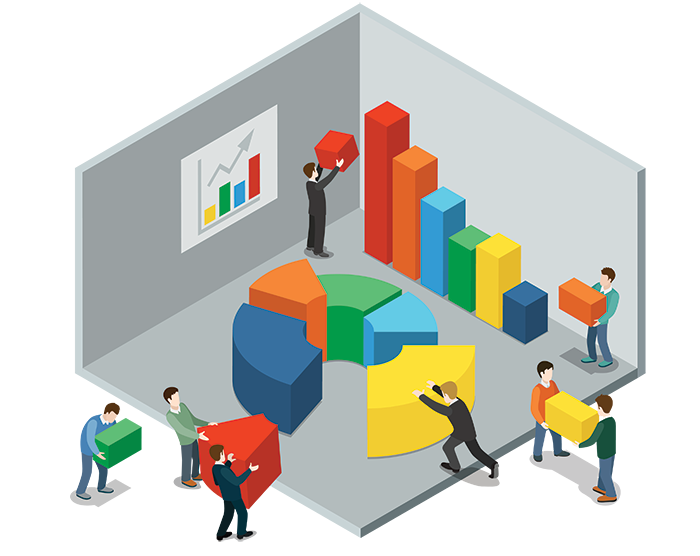If you have more than one customer, your target market isn’t really a single entity. It’s composed of a number of leads, each of whom has a specific set of concerns and challenges that they look to you to solve. Although every customer is unique, groups of them do have some key elements in common. These market segments might be based on geographical location, industry type, job title, behavioral data, or any one of a vast number of characteristics.
While retail sales might dip more into behavioral market segmentation, demographic and firmographic data form the foundation of market segments for most B2B businesses. The approach to segmentation in the B2B marketplace, then, is typically based on data you acquire directly from your leads via subscription forms or gated content as well as data enhancement that fills in the blanks on prospect records.
These six steps will help you define market segments from scratch or re-draw existing segments with greater clarity.
Spot Identifying Characteristics
How are your customers differentiated? What major groups can you identify? Segmentation starts with categorizing at the macro level by looking at industry type, company size, and other distinguishing attributes. You’ll be using segmentation not only to customize your marketing message, but also to find your most engaged leads, so think in broad terms at this stage. You’ll be narrowing your focus in later steps.
Decide What Matters Most
What are the most relevant characteristics of your customer base? While every bit of customer data is useful, it isn’t all equally meaningful for segmentation. If your business is heavily localized, as is the case for healthcare services, data storage facilities or produce delivery to restaurants, geography is a prime statistic for your segmentation process. If you do most of your business online and ship worldwide, location may not be as high a priority for you and your customer base.
Analyze Your Database
You now have a list of your customers’ defining characteristics and a clear idea of their relevance to sales, so now it’s time to compare it to the data you already have – your existing customer base. What do your best customers have in common? Which features are most closely correlated with sales? Sales don’t stop with a purchase; segmenting your customer base helps you serve their needs more efficiently while enhancing up-sell and cross-sell opportunities. Also, by knowing more about the people who have already bought from you, you learn more about those who are most likely to buy from you in the future.
Research Prospects
Segmentation really shines when it’s applied to lead generation. If leads coming into your sales funnel are properly identified and placed within the appropriate market segments, you’re able to give them customized care from the start. You can also learn about nascent market segments early by paying close attention to prospect analytics. Watch your traffic sources and track incoming leads’ behaviors on-site to discover the source of your next market segments.
Prioritize High-Value Segments
When you’ve identified market segments, your next move is to put your best customers first. It makes sense to invest the most in those segments that have invested the most in you. This step serves a two-fold purpose; it shows you where to focus your attention, but it also illustrates where you can eliminate wasted effort. If you find that two or three industries account for 80 percent of your sales, you don’t want to pare away the other 20 percent, but you can market to them more economically.
Tailor Your Approach
Once you’ve defined and prioritized market segments, how will you market specifically to them? Customized marketing messages make the most of audience segmentation, allowing you to give each lead more personalized service.
© Reach Marketing LLC 2017 All Rights Reserved.







